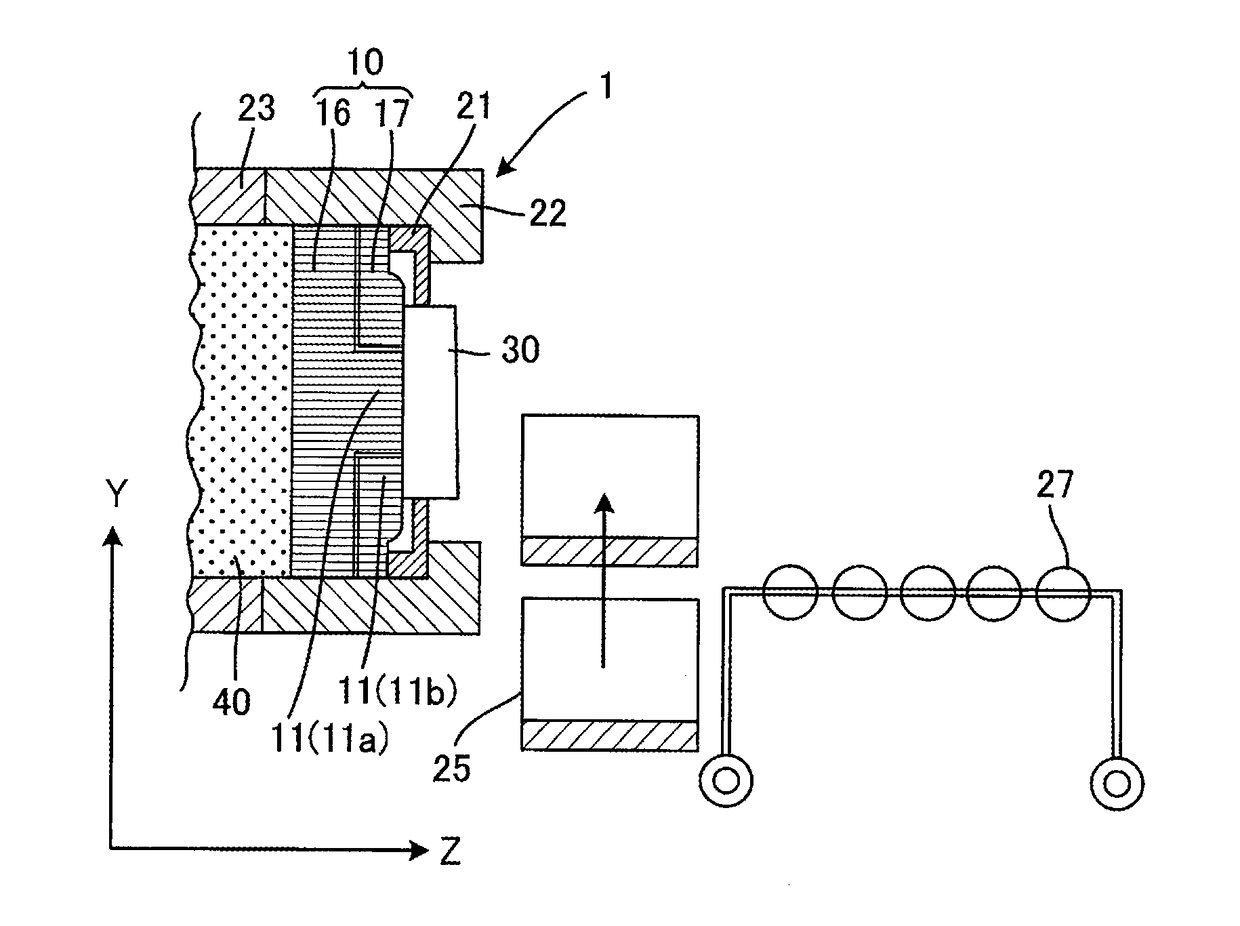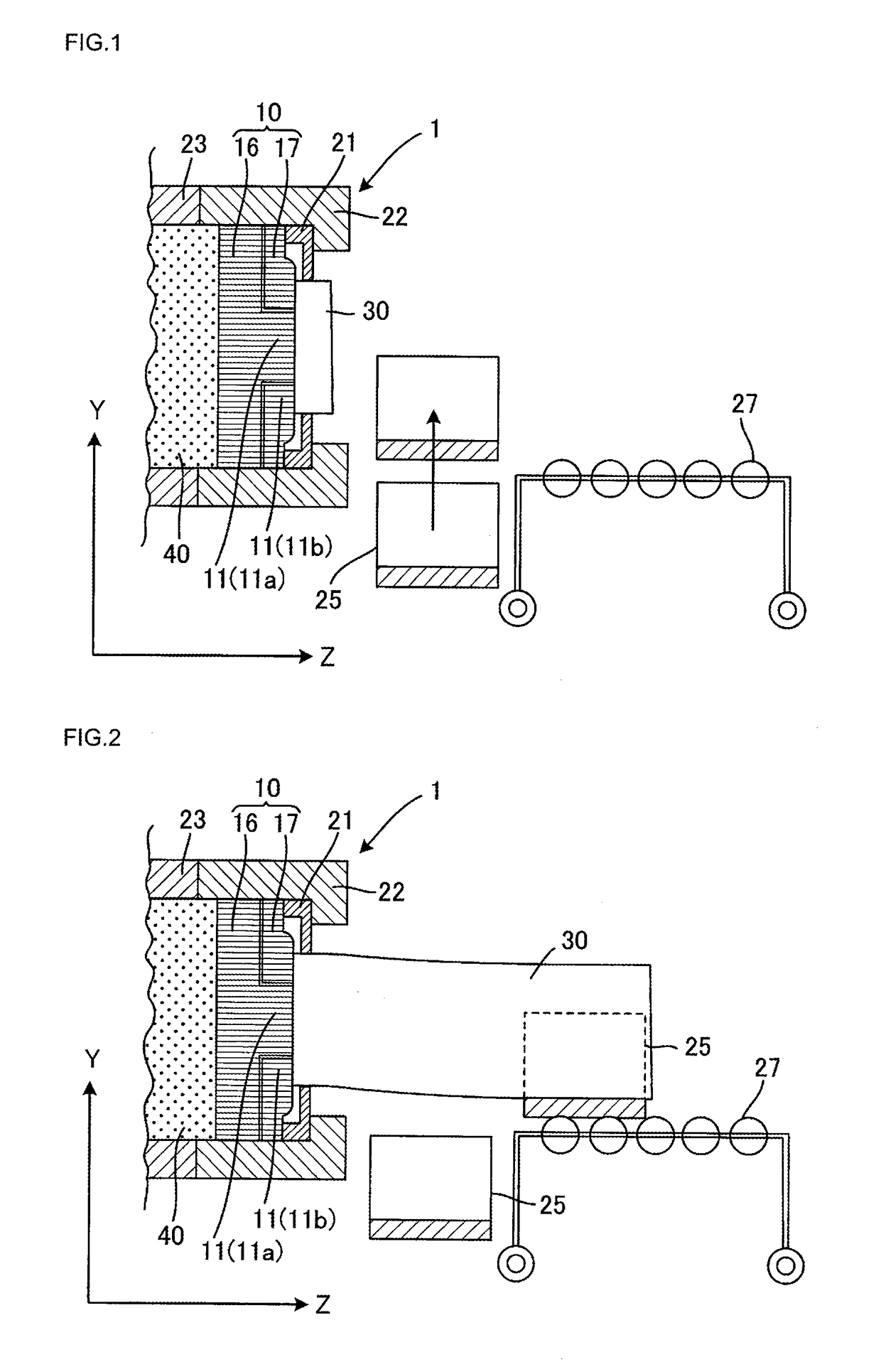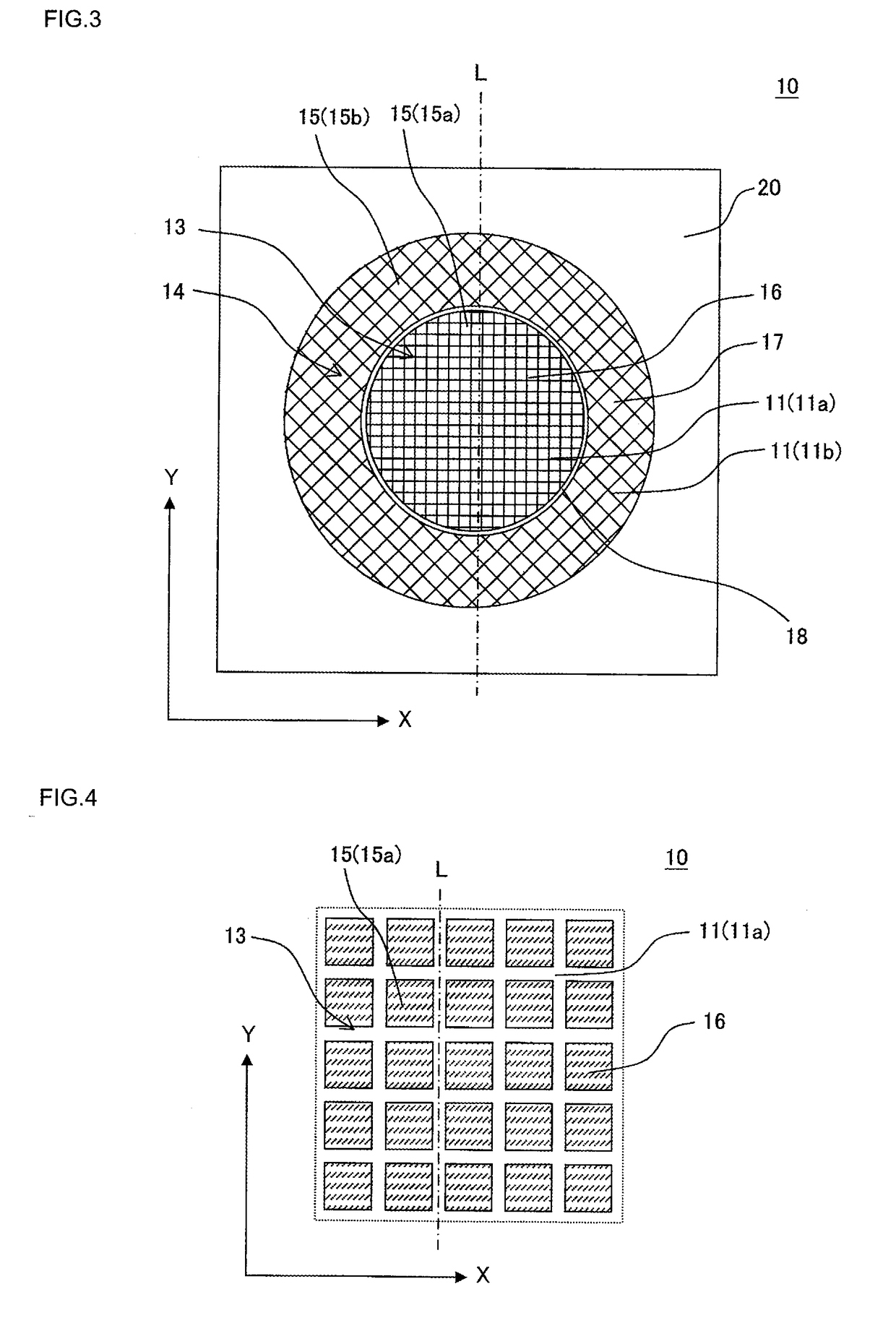Manufacturing method of honeycomb structure
- Summary
- Abstract
- Description
- Claims
- Application Information
AI Technical Summary
Benefits of technology
Problems solved by technology
Method used
Image
Examples
example 1
[0081]In Example 1, a honeycomb structure was manufactured by using a forming die 10 in which one row of latticed slits 11b formed in a circumferential portion 14 was inclined at 45° to one row of latticed slits 11a formed in a central portion 13 as shown in FIG. 3 and FIG. 4.
[0082]The honeycomb structure as a final product had a round pillar shape in which a diameter of each end face was 100 mm, and a diameter of a cell structure of a central portion in the end face was 70 mm. A boundary between the cell structure of the central portion and a cell structure of a circumferential portion had a boundary wall having a thickness of 0.1 mm. A value of a diameter of the cell structure of the above-mentioned central portion included this thickness of the boundary wall. In the cell structure of the central portion, a cell shape was quadrangular, a partition wall thickness was 0.09 mm, and a cell density was 93 cells / cm2. In the cell structure of the circumferential portion, a cell shape was...
PUM
| Property | Measurement | Unit |
|---|---|---|
| Angle | aaaaa | aaaaa |
| Angle | aaaaa | aaaaa |
| Fraction | aaaaa | aaaaa |
Abstract
Description
Claims
Application Information
 Login to View More
Login to View More - R&D
- Intellectual Property
- Life Sciences
- Materials
- Tech Scout
- Unparalleled Data Quality
- Higher Quality Content
- 60% Fewer Hallucinations
Browse by: Latest US Patents, China's latest patents, Technical Efficacy Thesaurus, Application Domain, Technology Topic, Popular Technical Reports.
© 2025 PatSnap. All rights reserved.Legal|Privacy policy|Modern Slavery Act Transparency Statement|Sitemap|About US| Contact US: help@patsnap.com



